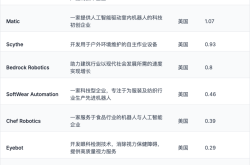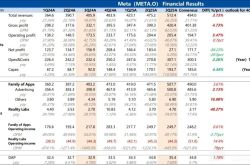Ride-sharing under Differentiated Supervision: A Win-Win for Policy Guidance and Industry Development
![]() 03/20 2025
03/20 2025
![]() 538
538

Source | Yuan Mei Hui
Ride-sharing, a vital mode of contemporary online ride-hailing transportation, plays diverse roles in commuting, intercity travel, and other scenarios. Effectively managing and guiding this industry, adapting policies to local conditions, and implementing precise measures to maximize its social value and achieve high-quality development are significant concerns in the sector.
Recently, some consumers have reported that ride-sharing orders in Guangzhou are going unfulfilled. Concurrently, drivers have mentioned that several regions in Guangdong have issued notices prohibiting operational vehicles from accepting ride-sharing orders, with platform systems imposing restrictions.
Beyond the regional policies introduced in Guangzhou, over the past few years, numerous regions have issued detailed ride-sharing management regulations. Among these, some cities have relaxed regulations to encourage the rapid development of ride-sharing.
Overall, regulatory authorities have set a clear tone for the ride-sharing industry—balancing efficiency and safety, market and public welfare, to foster high-quality development. Through policy guidance, technological innovation, and social coordination, ride-sharing can serve as both a "lubricant" to alleviate traffic pressure and a benchmark for green travel and the sharing economy.
01
More Refined Supervision
Currently, ride-sharing regulatory policies are becoming increasingly refined.
On March 11, the Panyu District Transportation Bureau of Guangzhou informed the media that, according to current Guangzhou regulations, operational vehicles cannot accept ride-sharing orders; only non-operational vehicles can, with a daily limit of three orders. Exceeding this limit constitutes illegal operation.
Similarly, the Guangzhou Municipal Transportation Bureau responded to media inquiries, stating that according to the 2021 "Opinions of the Guangzhou Municipal Transportation Bureau and the Guangzhou Municipal Public Security Bureau on Investigating and Handling Illegal Road Passenger Transport Involving the Identification of Private Carpooling," ride-sharing vehicles must be "non-operational," excluding online car-hailing services which cannot accept ride-sharing orders.
Recently, the Huizhou Municipal Transportation Bureau issued the "Several Provisions on Private Carpooling Travel" (hereinafter referred to as the "Provisions"), clarifying carpooling service nature, platform responsibilities, and cost-sharing standards, delineating boundaries with illegal operations. These regulations came into effect on March 10, 2025, with a three-year validity period.
The "Provisions" define private carpooling as a shared travel mode where the car owner posts travel information in advance, sharing part of the travel costs or providing free mutual assistance with passengers on the same route. It is a voluntary, non-profit civil act, not subject to road transport and taxi industry management.
Apart from Guangzhou and Huizhou, some cities have implemented relatively relaxed policies to promote ride-sharing services.
In March 2024, the newly revised "Detailed Rules for the Administration of Online Car-Hailing Services in Wuxi City" came into effect, adding regulations on ride-sharing. The rules encourage free and mutual assistance for private carpooling while clearly stipulating that online car-hailing services cannot be provided under the guise of private carpooling.
With many regions clarifying ride-sharing's legal status and introducing supportive policies for differentiated supervision, the industry now has a clear development framework and assurance. It is foreseeable that, after eliminating unstable factors, the ride-sharing industry is poised for a brighter development cycle.
02
Quasi-Public Service Products
After a decade of development, ride-sharing has emerged as a domestic employment and income reservoir, playing a crucial role in public travel.
Through flexible employment models, low-threshold access mechanisms, and inclusive income distribution, ride-sharing has become an "employment buffer zone" and "income supplement source" to mitigate economic fluctuations. For instance, Hello Ride-Sharing data revealed that the number of registered drivers nationwide reached approximately 30 million in 2023.
Furthermore, the "Report on the Characteristics of Ride-Sharing Travel" (hereinafter referred to as the "Report") released in December 2024 highlighted ride-sharing's diverse roles in commuting, intercity travel, and other scenarios, positioning it as a quasi-public service product.
The "Report" underscores the underestimated significance of ride-sharing for daily commuting in China, with a demand ratio fitting commuting characteristics as high as 35%.
Taking Hello as an example, about 7.5 million people use ride-sharing for their daily commutes. According to Frost & Sullivan, a global growth consulting firm, Hello accounted for 47.9% of the ride-sharing market share in 2023. Based on this, at least 190 million people nationwide commute via ride-sharing annually.
Additionally, the report shows that intracity travel accounts for 62.72% of ride-sharing demand, with intercity travel making up 37.28%. An in-depth analysis of weekly ride-sharing demand and order characteristics reveals that "dual-city living" is becoming increasingly common in core urban agglomerations, with intercity commuting emerging as a common workplace trend.
The report proposes: "As ride-sharing plays an increasingly diverse role in commuting and urban-rural passenger transport systems, and its public service nature becomes apparent, it is gradually being positioned as a quasi-public service product."
Under this new positioning, precise policy implementation is crucial for promoting ride-sharing's high-quality development.
A research team led by Associate Professor Zhang Quan from South China University of Technology found that some local competent departments recognize ride-sharing's value and actively promote government-enterprise cooperation and exploration.
"Some urban transportation departments, in response to changes in the passenger transport market, organize compliant transport capacity to join ride-sharing platforms and enhance travel services on key routes. Other cities use ride-sharing platforms to divert traffic from traditional travel services," said Zhang Quan.
Regarding effective ride-sharing social value utilization, some experts suggest adopting locally tailored strategies.
Associate Professor Gu Dasong from Southeast University's School of Law recommends exploring cooperation between enterprises and urban competent departments on the "carpool lane" policy to create efficient travel innovations, given ride-sharing's significant role in commuting.
03
A New Turning Point in Development
Over the past two years, following the growing pains of early industry development, the ride-sharing market is reaching a new turning point.
Ride-sharing's origins trace back 15 years, with initiatives like "taking fellow townspeople home during the Spring Festival travel rush" emerging around 2010. These were primarily based on public welfare and mutual assistance, yet to form a large-scale market.
In 2014, the "Opinions of the Beijing Municipal Commission of Transport on Carpooling of Small Passenger Vehicles in Beijing" officially regulated ride-sharing, marking the takeoff of the mobile internet-based ride-sharing industry.
Two years later, the "Guiding Opinions of the State Council on Deepening Reforms and Promoting the Healthy Development of the Taxi Industry" clarified ride-sharing's legal status, distinguishing it from online car-hailing (for profit).
Today, ride-sharing is an integral part of modern urban transportation.
Relevant research data shows that about 190 million people in China commute via ride-sharing annually, effectively alleviating peak-hour congestion and traffic pressure. Additionally, Hello Ride-Sharing's "Report on the Characteristics of Ride-Sharing Travel" indicates that its daily average ride-sharing service volume exceeds one million people, with commuting scenarios accounting for 35% and intercity travel for 37.28%.
After over a decade of development, the entire ride-sharing market still has significant growth potential.
Frost & Sullivan data shows that, in 2023, while ride-sharing accounted for only 4.4% of China's automobile passenger transport market share, the market size is rapidly expanding. It is estimated that the total transaction value will increase from 37.1 billion yuan in 2024 to 103.9 billion yuan in 2028, with a compound annual growth rate of 29.4%.
Moreover, multiple favorable factors contribute to the continuous increase in ride-sharing's market penetration rate. For instance, the current macroeconomic environment is recovering, China's urbanization rate has room for improvement, and the number of private cars in China is still growing.
Apart from considerable market growth potential, ride-sharing's lower scale barriers and lighter operating model, compared to online taxi-hailing services, facilitate further industry development.
Ride-sharing's business logic is closer to shared travel than online taxi-hailing, more efficiently matching travel demand with idle household car resources, potentially better suited to China's vast travel needs and characteristics.
While competition and growth are essential in the ride-sharing industry, achieving refined operation, ensuring safe business operations, and effectively addressing compliance challenges are topics the entire industry and competent departments must jointly explore and solve.
Some images are sourced from the internet. Please inform us for deletion if there is any infringement.








